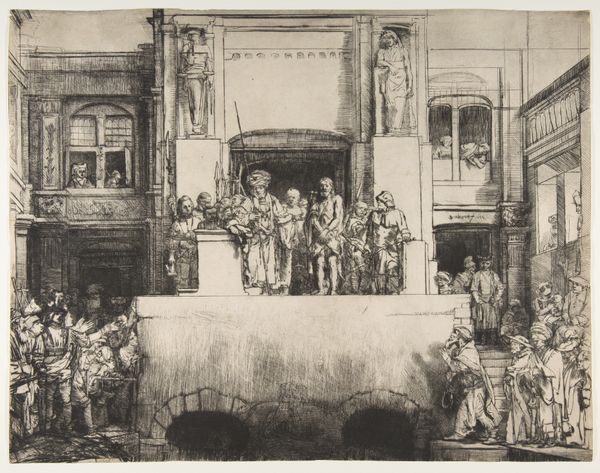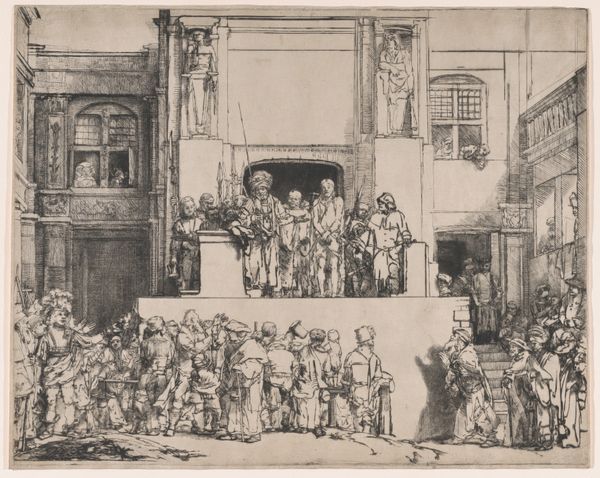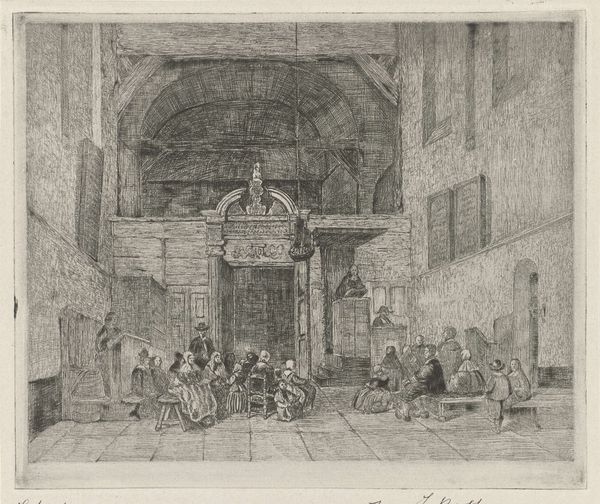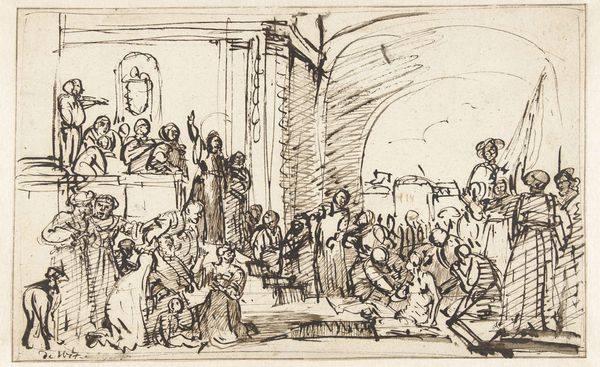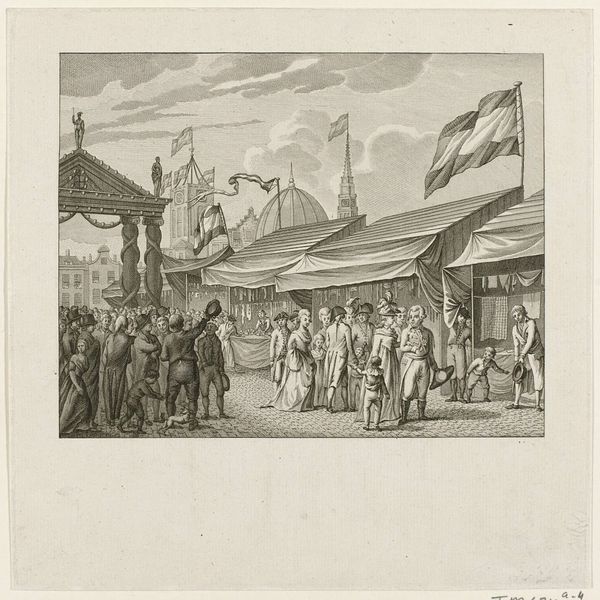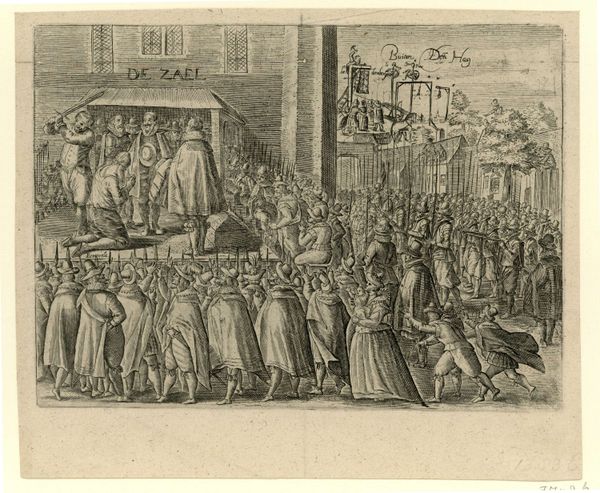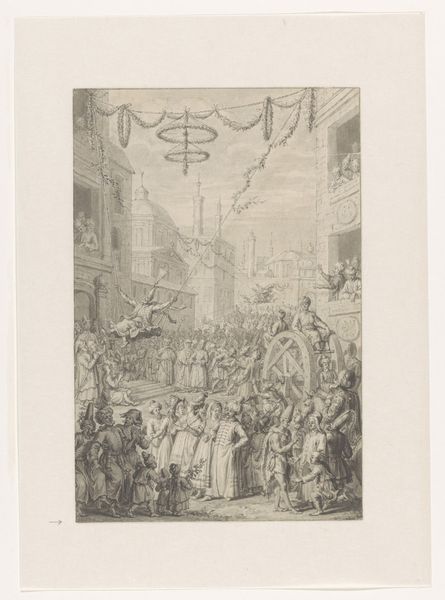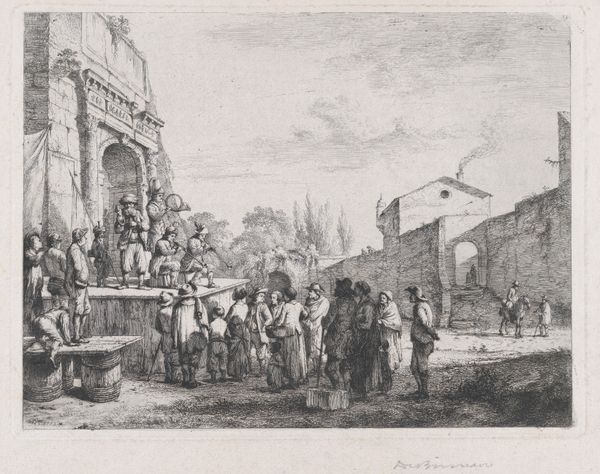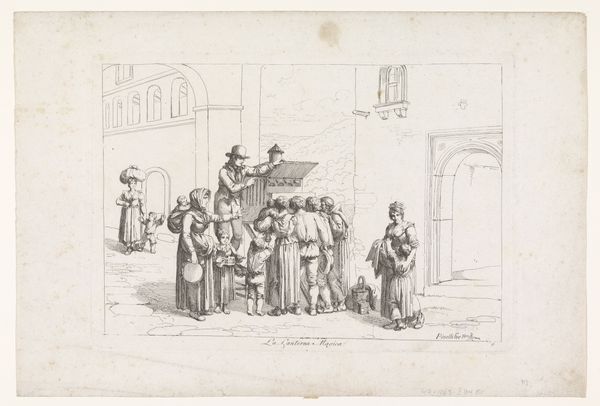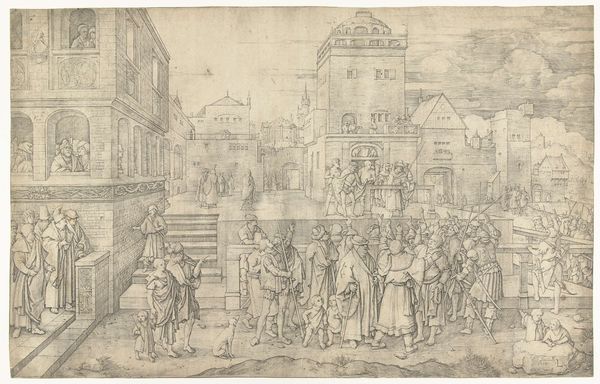
drawing, print, etching, ink
#
portrait
#
drawing
#
ink drawing
#
baroque
# print
#
etching
#
figuration
#
ink
#
history-painting
Dimensions: height 387 mm, width 454 mm
Copyright: Rijks Museum: Open Domain
Editor: This is Rembrandt van Rijn's "Christ Presented to the People," or "Ecce Homo," an etching made in 1655. The scene is stark, captured in intricate lines of ink. I'm struck by the sheer density of people depicted – they create this feeling of oppressive tension. What's your interpretation of its historical context? Curator: Rembrandt’s choice to depict this particular scene from the Gospels is fascinating, especially when considered through the lens of 17th-century Dutch society. Rembrandt, despite being Protestant himself, created several pieces based on key episodes of the bible and religious art were a tool for reflection, morality and piety at the time. Look at how the print’s circulation itself would have become a way for diverse communities to confront their shared beliefs about justice, faith, and leadership through public engagement. What stands out to you about the architectural elements in the etching? Editor: The imposing arches and classical sculptures feel grand and almost theatrical, staging the drama that’s unfolding. It emphasizes the power of the state as something massive, indifferent. Curator: Exactly. That's why the choice of such architectural context highlights the public role of justice at the time. Rembrandt places the religious moment into a broader societal structure, creating a visual discourse on institutional authority. Consider the figures in the windows versus the crowd; how do these micro-communities interact with each other during Christ’s judgement? Editor: That's a good point, it’s like various audiences each processing events with distance or proximity from it. It highlights society's involvement at all levels with that pivotal event, right? I hadn’t fully considered that, but seeing it that way is so eye-opening. Curator: Precisely! Considering Rembrandt’s choices about setting, he creates this image, and also sets the tone for debate on power and spectatorship in justice, reflecting how artists participated in shaping the understanding of power.
Comments
rijksmuseum about 2 years ago
⋮
Rembrandt stages the scene with a multitude of figures, each responding individually to the events on the dais. Pilate, with the long staff, points at Christ and leaves the choice to the people to release either ‘the King of the Jews’ or the murderer Barabbas. The outcome is known. Rembrandt created this enormous scene entirely in drypoint, scratching directly into the copperplate.
Join the conversation
Join millions of artists and users on Artera today and experience the ultimate creative platform.
